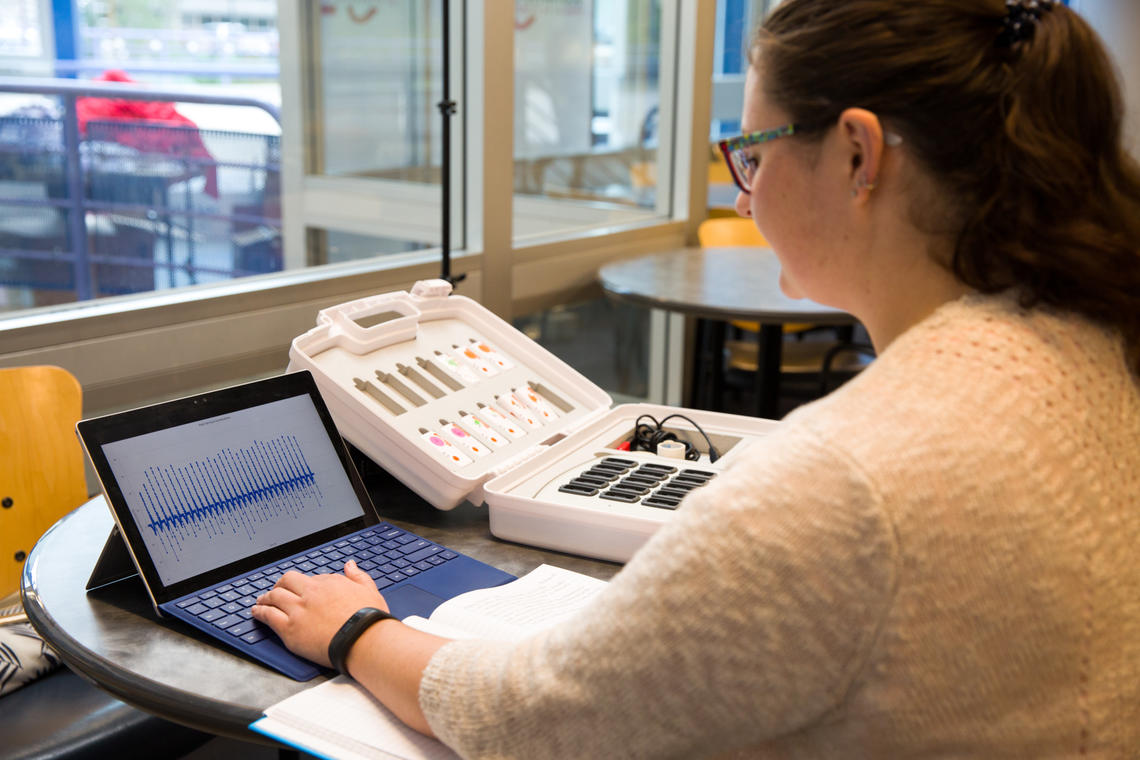March 6, 2019
Proper use of wearable technology is considered the 'wild, wild west'

If you’re out sweating with your Fitbit aiming for 10,000 steps, Kinesiology’s Dr. Reed Ferber, PhD, pictured above, wants you to know you don’t need to feel guilty if you don’t hit that goal.
“Nobody should feel bad if they’re not achieving 10,000 steps a day,” says Ferber, also a professor in the faculties of nursing and Cumming School of Medicine as well as the director of the University of Calgary’s Running Injury Clinic. “There is no scientific merit for doing 10,000 steps a day. Doing 10,000 steps a day is a recommendation, and that’s it — it’s a recommendation.”
Ferber — senior author of a new study on wearable technology published in the Journal of Biomechanics, one of the world’s top sports science journals — believes fitness goals are very individual. His study is the first to set guidelines on how to properly use data from wearable technology out in the real world, with the potential to help sports scientists, physiotherapists, end users and wearable technology companies alike.
Research conducted on runners
“Right now, using wearable technology to collect scientific data out in the real world is the wild, wild west. There are no established rules,” Ferber says, noting that current wearable technologies don’t provide any context to the data they collect.
Wearable technology says a few things about what you did on any given day — for example, how many steps you took and what your heart rate was — but doesn’t explain what the data actually means. “It forces you to draw conclusions about how you did.”
In his research, conducted last summer, Ferber wanted to find out how many runs it would take to determine a ‘typical’ run for individual runners. In his study, which followed 12 recreational runners doing 10 runs each as part of UCalgary’s Marathon Training Program, he found that runners need to include data from at least five runs to better understand how they’re doing.

Kinesiology student Teague Foreman reviews the data.
Riley Brandt, University of Calgary
New information for wearable tech companies
“It empowers people to figure out, ‘This is my average.’ Individual users can use this approach to take any five days’ worth of data, average it out and say, ‘This is what represents me.’ We are providing guidelines for the research community and for the end users of wearable technologies. And we would also like to see wearable tech companies use our research to change the way they provide data, in a way that’s more useful to their users,” Ferber says.
These guidelines are a platform for Ferber and his research team to move forward this spring with new research on injury prediction. “Once we have established what someone’s typical pattern is, we can use it to predict injury. If we know you are well outside the typical way you run, you might be on the verge of an injury,” explains Ferber, who hopes to enrol hundreds of runners in this research.
Prediction to protect injuries in many sports
The researchers will collect data to determine runners’ individual ‘green zones’ — the typical way they run. They will then use that data to determine whether they can predict if runners are about to become injured, before they feel pain, and helping them make adjustments to prevent an injury from actually occurring.
This research applies to anyone who’s using a wearable fitness device of some type — everyone from runners to mall walkers, cyclists, swimmers and others, Ferber says.
It means that athletes and anyone who is physically active will get more meaningful data to help them make informed choices, notes Colleen Parsons, former head coach of the UCalgary Marathon Program. “I think there is huge potential, down the road, to be able to take all this data, boil it down for the average person to understand and get some useful information out of it,” she says.

Kinesiology student Lindsey Agnew uses wearable technology.
Riley Brandt, University of Calgary
Interested in this topic? Learn more
Ferber’s research is part of the NSERC Wearable Technology Research and Collaboration (We-TRAC) Training Program. We-TRAC aims to train the next generation of wearable technology experts through cross-training in biomechanics, data science, and entrepreneurship and is Canada’s first degree specialization in wearable technology.
Reed Ferber is the senior author of New considerations for collecting biomechanical data using wearable sensors, which is published in the Journal of Biomechanics and written by lead author Dr. Lauren Benson and co-authors Drs. Nizam Ahamed and Dylan Kobsar, who are all postdoctoral research fellows in Ferber’s lab.

